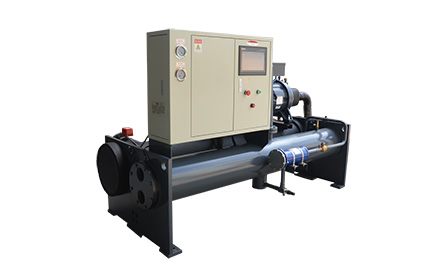Maintenance of the condenser of the four major parts of the chiller
发布时间:2020-10-13 10:05:00 浏览:4次 责任编辑:Guangdong Jecicool Refrigeration Machinery Co.,Ltd
The maintenance of the four major parts of the industrial chiller condenser: the condenser is used for a long time, it will stick thick dirt on the heat transfer surface of the condenser. The heat transfer performance of the dirt is extremely low, which causes the resistance of the refrigerant vapor to dissipate the heat through the heat transfer wall of the condenser, and thus the condensation temperature of the refrigerant rises. Therefore, frequent maintenance work to remove the fouling of the condenser is required. Below, a brief introduction to the method of removing the dirt on the condenser.
1. How to remove dust from air-cooled condenser
Air-cooled condensers use air as the cooling medium, and the air in the environment always contains dust. After the condenser is used for a long time, a layer of dust will accumulate on the heat transfer surface, making the heat transfer tubes and fins of the condenser unable to Good heat exchange with outside cooling air. We should regularly blow away these dust with compressed air.
2. the removal method of water-cooled condenser dirt
The cooling water used in the water-cooled condenser contains impurities. After a long time, they will precipitate in the cooling pipe, bond into scale, hinder the circulation of cooling water, and worsen heat transfer and increase the condensation temperature of the refrigerant. For this reason, the scale should be removed regularly (usually once every 2 to 3 years. If the cooling water is deep well water or mountain water, it should be once a year). The commonly used descaling methods are as follows:
(1) Pull with a wire brush. Remove the cast iron cover (water cover) at both ends of the shell and tube condenser, use a spiral steel wire brush to extend into the cooling tube to pull the brush back and forth, and then use a round steel rod close to the inner diameter of the tube to insert the cooling tube repeatedly , Flush with pressure water while poking. This descaling method is relatively simple and easy to implement, but it is labor intensive.
(2) Roll with a special scraper. Remove the water caps at both ends of the shell-and-tube condenser, connect it to the flexible shaft with a special scraper, and connect the other end of the flexible shaft to the motor shaft. Insert the scraper into the cooling tube and start the motor to roll. At the same time, water is sprayed to cool the scale scraped from the scraper and the washing pipe. This method works well, but it is only suitable for steel cooling pipes, not for copper cooling pipes.
(3) Hydrochloric acid dissolution method. The equipment required for the hydrochloric acid dissolution method includes an acid-resistant pump and an acid-resistant tank. The process is shown in Figure 5-8. The steps are as follows:
①Extract all the refrigerant in the industrial chiller system out of the system, or pump out to the liquid reservoir.
②Close the water inlet valve of the condenser, and remove the water inlet and outlet pipes of the condenser.
③Connect the water inlet and outlet joints of the condenser to the pickling system with water pipes of the same diameter.
After descaling with the above method, a pressure leak test should be performed on the refrigerant side of the condenser to check whether the cooling pipe is damaged and leaks during the descaling process. After the leak detection is completed, connect according to the original system, and perform work such as vacuuming and trial operation.
It should also be noted that the waste liquid of the hydrochloric acid solution (or descaling solution) must be discharged into the sewer, and must not be discharged into a septic tank, nor should it be scattered on grass or crops because these solutions are harmful to plant growth.
3. Cleaning method for cooling tower and evaporative condenser:
First, calculate the actual amount of water stored in the cooling water system (water storage grenade, water tank, water pipe, etc.), and prepare the amount of cleaning chemicals needed. Then do the following:
① Rinse the water storage tank thoroughly or manually to remove all the sludge.
②Close the discharge pipeline and let the circulating water pump work at the same time to fill the water storage tank with clean water to the lowest water level.
③While circulating the water, slowly start adding the prepared quantitative cleaning chemicals, mostly from the water storage tank.
④Fill the system with clean water again.
This treatment is performed regularly once a year. The effect is best.











 Jo Liu
Jo Liu
 +86 13924630342
+86 13924630342